Regenerative Agriculture
Regenerative Agriculture is a system of farming principles and practices that increases biodiversity, enriches soils, improves watersheds, and enhances ecosystem services*.
Through careful observation, we manage each pasture dependent on its needs, utilising the following techniques:
- Measuring the Land Condition Score (LCS)
- Measuring levels of Soil Organic Carbon (SOC)
- Conducting annual stock takes of 3P Grasses (Perennial, Palatable and Productive)
- Water conservation
- Planting up to a total of six varieties of plants, grasses and legumes to improve soil health and livestock productivity
- Monitoring and measuring resting periods after grazing
- Matching stocking rate to available carrying capacity
- Using animal density as a tool for pasture revitalisation
- Managing livestock effectively for improved performance – where appropriate through use of supplements such as biochar, red asparagopsis and 3-NOP.
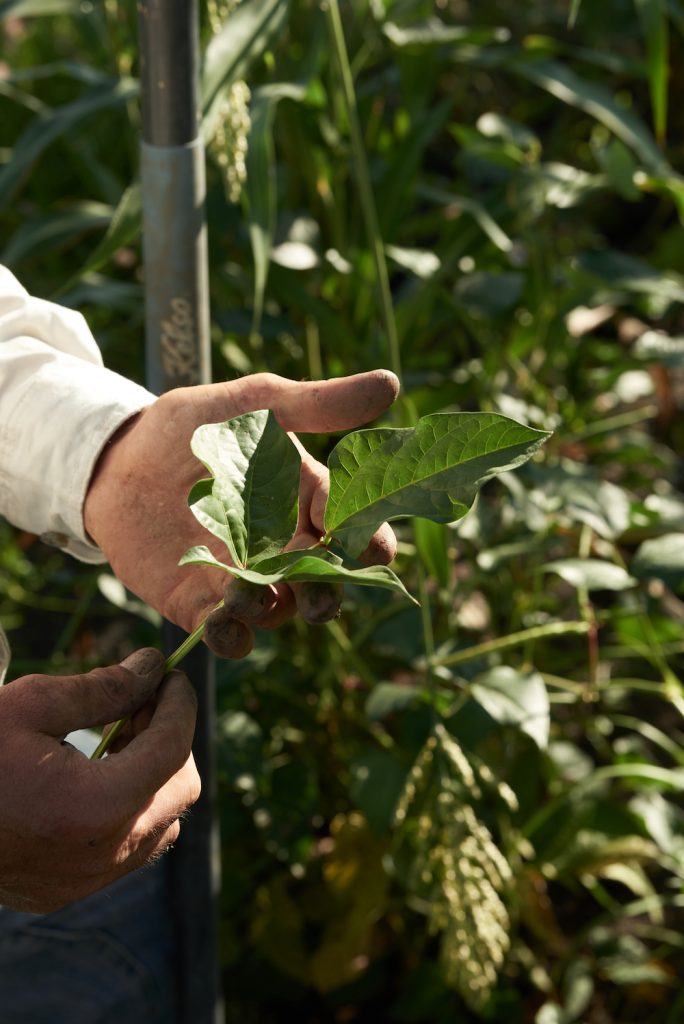
Biodiversity above and below the ground is critical
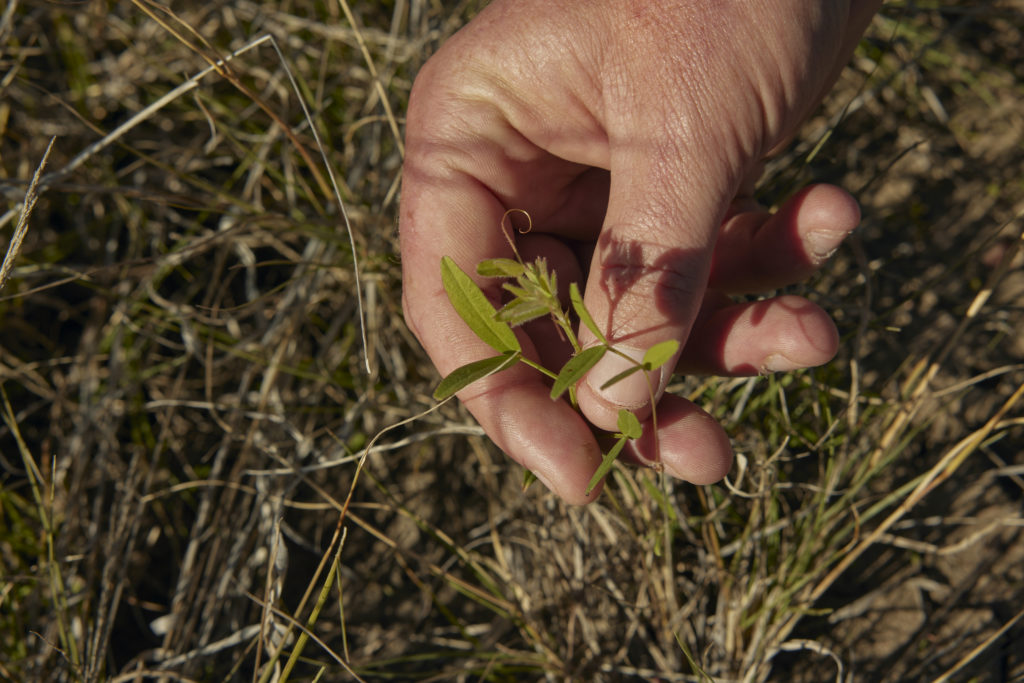
The first step to the land restoration process involves analysing the microbial activity in the soils, through a combination of chemical, physical and biological testing. This then allows our custodians to isolate key requirements and develop pasture plans that will introduce species to mobilise nutrients and re-boot the natural cycle.
Biodiverse pastures offer greater nutritional value through increased mineral, protein and phosphorous levels which can reduce the need for supplements and enhance animal performance.
The principles of regenerative grazing can further contribute to soil health.
- Smaller paddocks are heavily stocked for short periods, followed by a spelling
- This promotes even grazing of pastures and a bed of protective mulch
- As they graze, the cloven hoofs of the cattle break the soil surface crust, enabling enhanced water infiltration
- The cattle’s excrements help the mineralisation process of the soil. The carbon rich soil has higher levels of nutrients and improved water retention capacity, resulting in greater plant growth, oxygen release back into the atmosphere and a superior food source for animals.
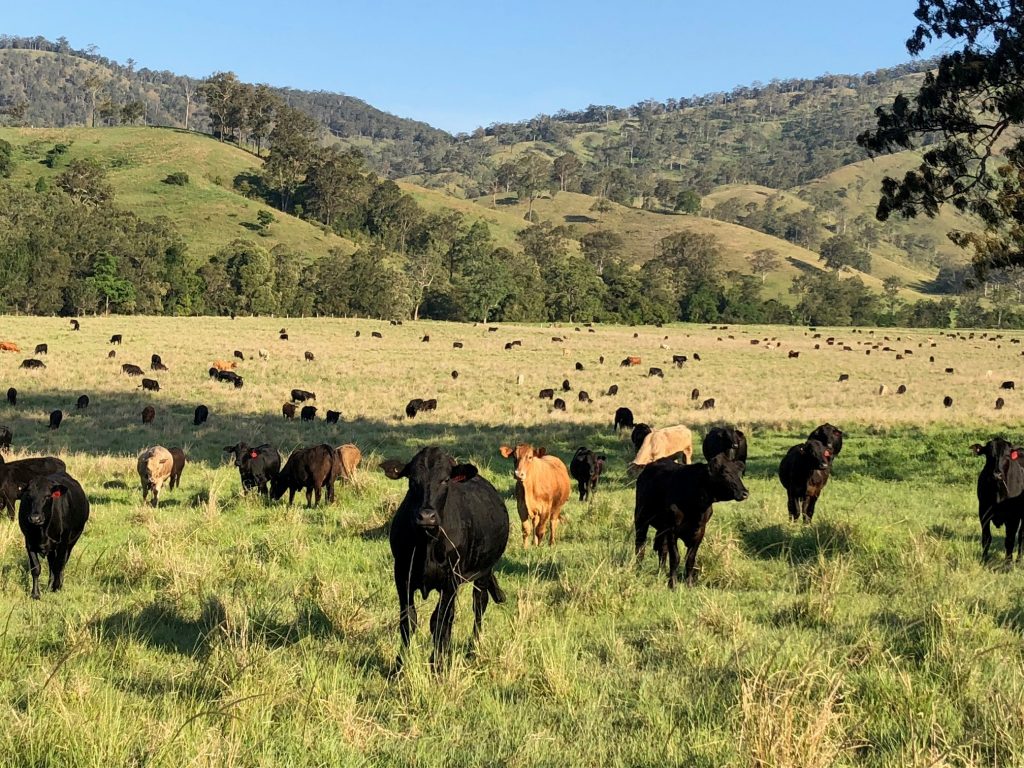
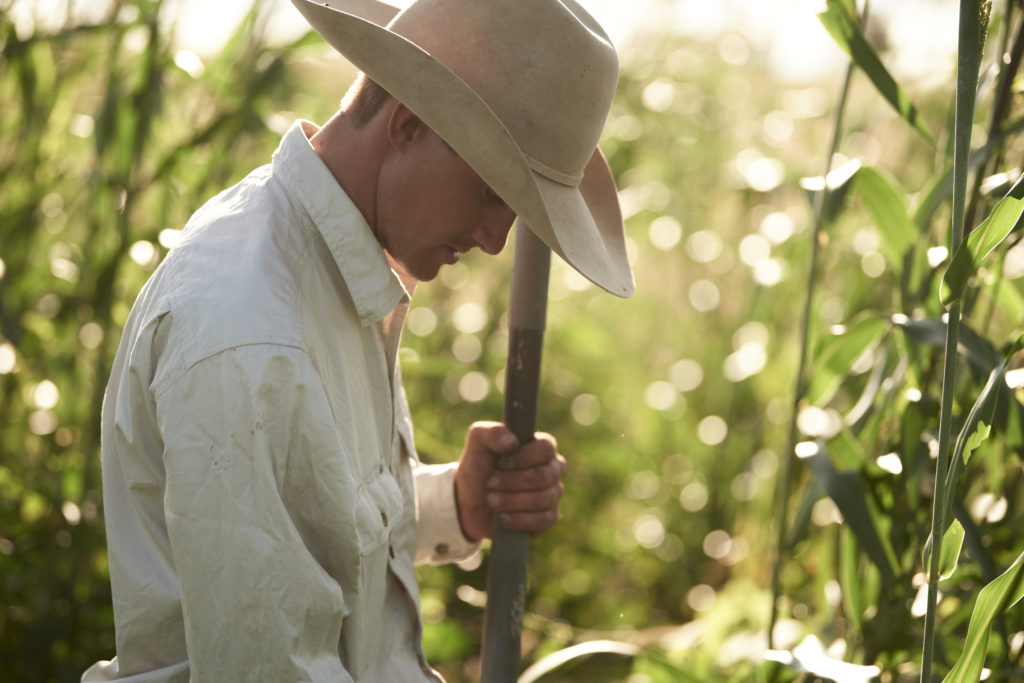
How is carbon sequestered in soil
The practice of soil carbon sequestration is often conceptualised and discussed in terms of storing carbon – but really the idea is to change the flow so that the carbon entering the soil is greater than the carbon leaving it. Soil organic carbon formation starts with the process of photosynthesis, which harnesses the sun’s energy to make carbohydrates by combining hydrogen atoms (acquired from water molecules) with carbon atoms (from carbon dioxide). These carbohydrates are used by the plant for energy, building plant biomass, and are exuded into the soil via plant roots to feed soil organisms. When these plants eventually die, soil animals and microorganisms decompose and transform the plant material (above and below ground roots and shoots), and in doing so release carbon-rich compounds into the soil.
The amount of carbon entering the soil is driven by plant productivity
This productivity can be increased, for example, by maintaining greater ground cover, altering grazing practices, and introducing legumes and deep-rooted perennials. If soil organic carbon becomes chemically bonded to soil mineral surfaces (i.e. clay) or is encapsulated within soil aggregates it can remain in the soil for decades or even centuries, as it is protected from microbial decomposition. A sustained increase of plant inputs to the soil, particularly under favourable soil conditions that promote long-term carbon storage (e.g. soils with a high clay content), will generate an increase in soil carbon stocks over time.

Packhorse has set a target to be carbon neutral by 2028
The effectiveness of Packhorse’s regenerative agriculture approach will be measured by Carbon Link Ltd (an independent provider consisting of a team of scientists, engineers, farmers and business people) through testing the levels of soil organic carbon (SOC).
Packhorse will then work with the Emissions Reduction Fund to deliver and develop the changes required to increase the SOC levels in the soil.
After five years, Carbon Link Ltd will retest the SOC levels and then the Australian Carbon Credit Units (ACCUs) will be issued.
An ACCU represents 1 tonne of CO2 and can be held or sold on the open market.
Carbon sequestration will continue to be measured over 25 years.
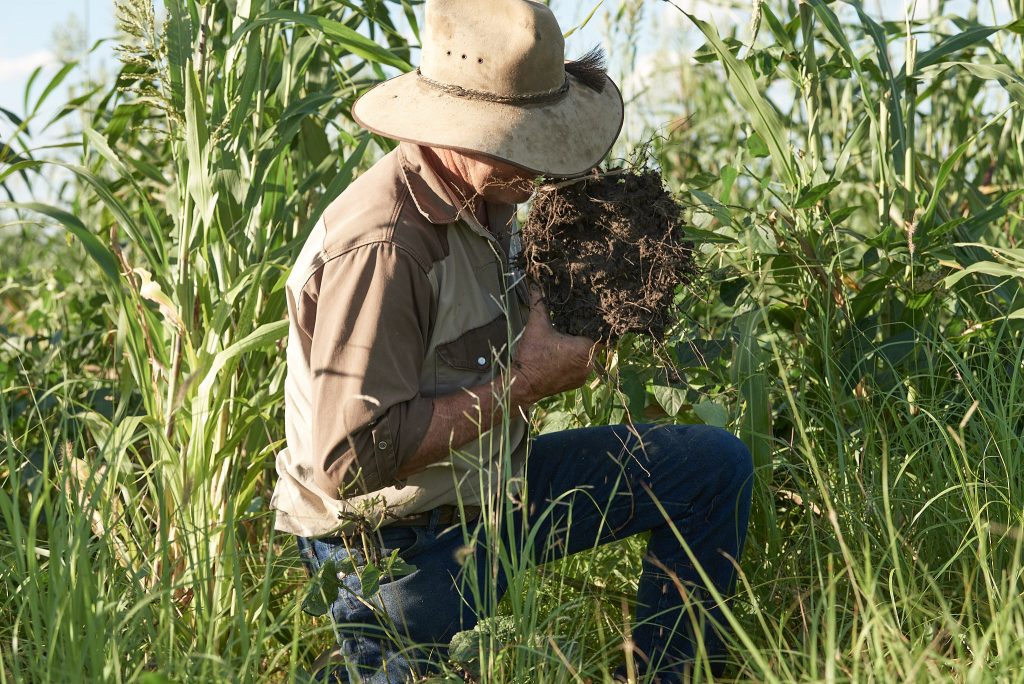
Packhorse Carbon Story
A simple explanation of carbon sequestration in soil through regenerative agricultural methods and animal impact
Our Environmental Partners

